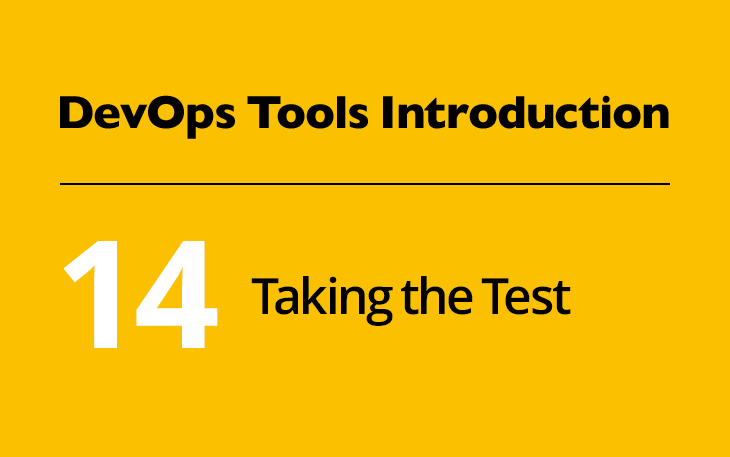DevOps Tools Introduction #14: Taking the Test

Congratulations, you’ve made it to the final posting in our DevOps Tools Introduction series. Throughout the last few months, we’ve explored new topics each and every week.
Working through all the referenced resources was a significant investment of time. In return, you now have a solid foundation in a technology stack which is becoming increasingly important. We’ve covered modern approaches to application design, version control, continuous integration and delivery through to container virtualization, including orchestration and infrastructure, configuration automation, VM deployments, monitoring and log management. These new tools are changing the way that services are created and delivered. While I will provide (almost) no new resources this week, you should take some time to reflect on how you could benefit from these tools to make your daily job more effective and more interesting.
The one link I do want to share with you today is the Periodic Table of DevOps Tools. This page illustrates how diverse the DevOps Tools ecosystem has become. It groups the tools by categories and you can see that you’ve been introduced to one tool in most of the categories. The tools we covered in this blog series are those covered in the DevOps Tools Engineer exam. They have been selected by several community consultations and public discussions. Therefore, they can be considered a safe selection of tools which are relevant and a good initial choice to get started with DevOps.
Equipped with knowledge about these tools, you might consider getting the LPI DevOps Tools Engineer certification which stats your proficiency in our set of DevOps tools. Now that you’ve worked through this blog series, review the exam objectives again. They define the scope of the exam. Consider printing them so you can check off those tasks and tools which you already know well. Carefully review the blog postings for the remaining topics and the available documentation. Go back to the command line and redo all of the objectives’ tasks as a final exercise. If something doesn’t work, schedule extra time to review this topic again. Take notes if you encounter anything that might be worth remembering for the exam. Keep in mind that you will have to answer questions about principles and concepts as well as questions about commands, files, and configuration settings.
When the exam comes closer, review your notes in frequent intervals and further condense them until you feel ready for the exam. Finally, visit the LPI website and the LPI marketplace to get information about scheduling your exam.
If you’re planning to become a Linux Professional Institute DevOps Tools Engineer, I wish you time and peace to work through your notes, review the exam objectives and experiment with the tools covered in the exam. And, of course, I wish you good luck on the exam.
I can’t conclude this series without thanking the creators of all the great resources I referenced in this series for sharing their knowledge and insights. Finally, I’d like to thank all of you who followed this series for your time and interest. I hope you’ve enjoyed this blog series as much as I did. Even though this series is over now, keep an eye on the LPI blog. We have more exciting content coming.
